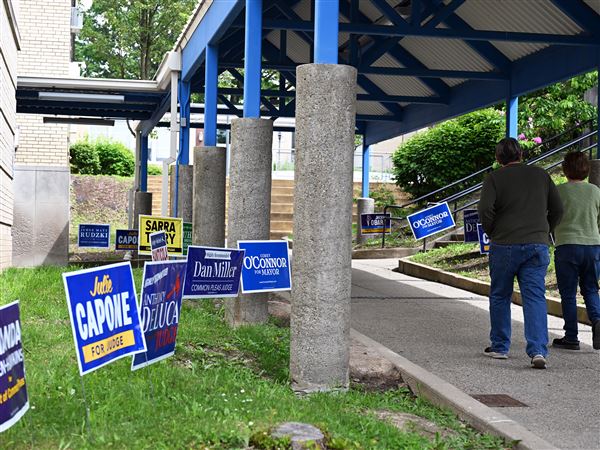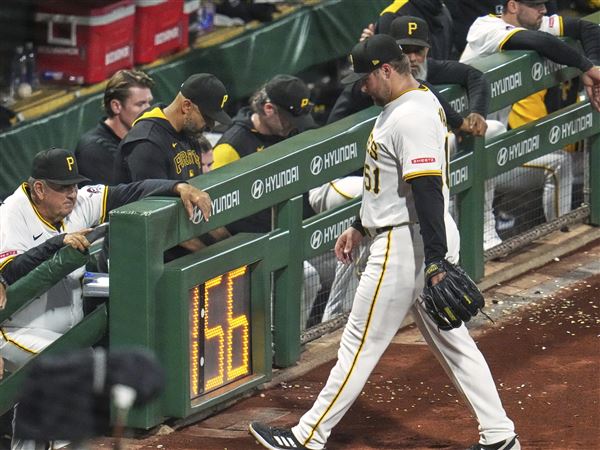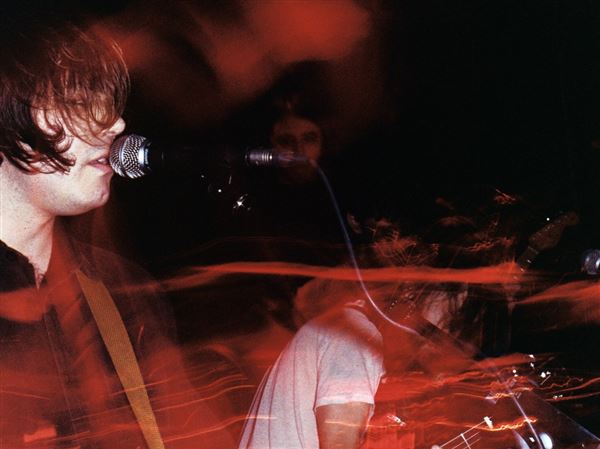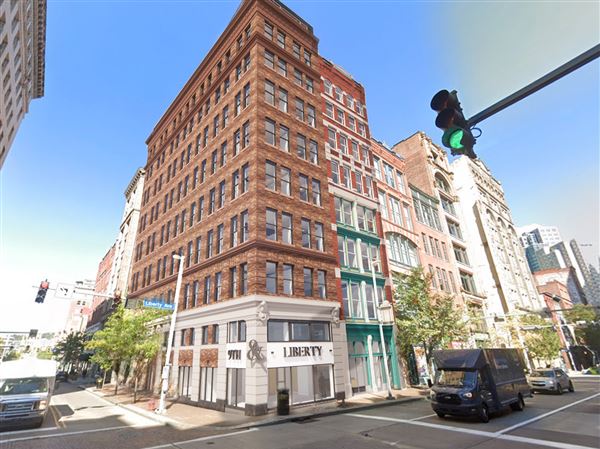CLEVELAND -- It looks and feels like a subway, but it's not. The HealthLine is a bus route, but calling it that doesn't begin to do it justice.
Long, silver vehicles designed to resemble rail cars move up and down a 9-mile corridor in their own reserved lanes, whizzing past traffic lights that are programmed to give them priority, picking up passengers who have paid their fares at vending machines in about 40 stations along the route.
What was once a 46-minute trip on the old No. 6 bus along Euclid Avenue now takes 34 minutes, and the scenery has improved, thanks to $5 billion in development that has occurred since ground was broken for the line. A faded, blighted corridor that linked the city's downtown with its medical-university hub now sparkles with revival.
Since its opening in 2008, ridership has soared. The No. 6 carried 2.6 million riders in its final year; HealthLine ridership last year was 4.6 million. That includes people who wouldn't have boarded a conventional city bus on a dare.
It's easy to see why Pittsburgh wants one of these.
Today, a delegation led by Allegheny County Executive Rich Fitzgerald will tour the HealthLine (so designated in a naming-rights deal with Cleveland Clinic and University Hospitals) and hear presentations about its extraordinary success. Their hope is to advance plans for a similar service connecting Downtown and Oakland.
The HealthLine was conceived in 1995, when Cleveland officials chose it over four proposed rail lines because it could be built for less than half the cost, while delivering many of the benefits of a rail system. Originally called the Silver Line, it was modeled after a system that opened in 1974 in Curitiba, Brazil -- the world's first example of what is now known as Bus Rapid Transit, or BRT.
Like Pittsburgh's North Shore Connector subway extension, the HealthLine was widely derided as a boondoggle while under construction. "Lipstick on a pig. No one's going to ride it," wrote a commenter on The Plain Dealer newspaper's website the day after it opened.
"People wanted rail. Rail was not going to happen" because of the high cost, said Mary Shaffer, spokeswoman for the Greater Cleveland Regional Transit Authority. "There were a lot of people who were put off by the construction."
The $197 million project literally remade Euclid Avenue, replacing ancient underground infrastructure and crumbling sidewalks, reconstructing the road surface, adding station kiosks and landscaping medians between the stops.
As the project neared completion in February 2008, The Plain Dealer newspaper reported that $4.3 billion in development or planned development had occurred in the Euclid Avenue corridor, citing the BRT project as a big reason. "In a city pummeled by news about crime, population loss and decay, it's a great shining exception -- and one solid reason to be excited about Cleveland's future," the article concluded.
The project has won numerous awards, most recently getting a "silver" ranking from the Institute for Transportation and Development Policy, which evaluates and rates bus-only corridors around the world. It was the highest ranking for a BRT system in the U.S.
"People come from all over the world to see this HealthLine," Ms. Shaffer said. "Last week, we had a group from Australia."
The success has helped stimulate a boom in BRT development across the nation, with projects planned or under development in Los Angeles, Chicago, Denver, San Francisco, Boston, Hartford, Conn., and elsewhere. El Paso, Texas, broke ground for a $141.6 million BRT system this week.
Kashmere Landrum of Cleveland, boarding a HealthLine bus at East Ninth Street on Wednesday, said its appeal is that it feels more like riding a subway than a bus. "It comes faster. There's more space. It's quicker," she said.
The service operates 24 hours a day, seven days a week, with trips every six to eight minutes during much of the day. Riders purchase tickets in the stations, which have display boards saying when the next vehicle will arrive.
The stations have high platforms and the buses are equipped with sensors enabling them to pull up flush to the station to ease boarding, especially for disabled riders. The mimickry of a rail vehicle even extends to the old-fashioned bells that operators ring as they approach a station.
Ms. Shaffer said the resemblance to rail attracts riders who would otherwise be reluctant to ride buses. Ridership swells during the noon hour, as workers use the line to get to their favorite restaurants.
While the HealthLine has been a transportation success, its greater impact has been on the Euclid Street corridor, once known as Millionaire's Row but which fell on hard times in the 1960s and 1970s.
"There was prostitution. There was crime. The city was emerging from default," said James A. Haviland, executive director of MidTown Cleveland Inc., a private nonprofit organization that has had multimillion-dollar success in bringing new business to the Midtown district.
The organization aggressively assembled land, removed blighted buildings and developed stringent zoning in anticipation of improved transit in the corridor, and now has its headquarters in the renovated "World Famous Cleveland Agora" theater.
Some of the development along Euclid would have happened anyway -- hospital and university expansion has occurred throughout the nation -- but Mr. Haviland said the transit line has been a big factor in the district's comeback.
"There's no question it complemented our vision and really helped to accelerate the redevelopment," he said. "Without it, Euclid Avenue wasn't a very attractive street."
A large delegation of more than 60 is expected from Pittsburgh for today's tour.
The Pittsburgh project is still in its relative infancy. In April, the Rockefeller Foundation awarded $1.2 million to Pittsburgh and three other cities to promote BRT. Work to identify a preferred corridor and alignment has been going on for about two years.
Mr. Fitzgerald has estimated the cost at between $180 million to $210 million, or less than half of the $523.4 million that was spent on the North Shore Connector.
Court Gould, executive director of Sustainable Pittsburgh, which has taken the lead on planning for a BRT line, said it would operate along Forbes and Fifth avenues between Downtown and Oakland. Backers hope to identify a preferred option for configuring bus-only lanes by fall. The tasks of securing funding, design and engineering would follow, with hopes for a start of construction in 2016 or 2017, he said.
First Published: June 20, 2013, 8:00 a.m.















